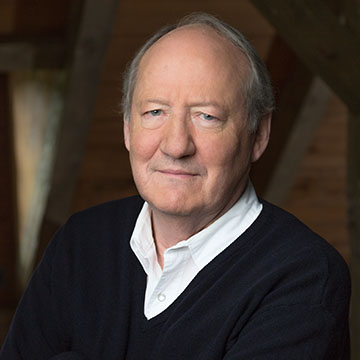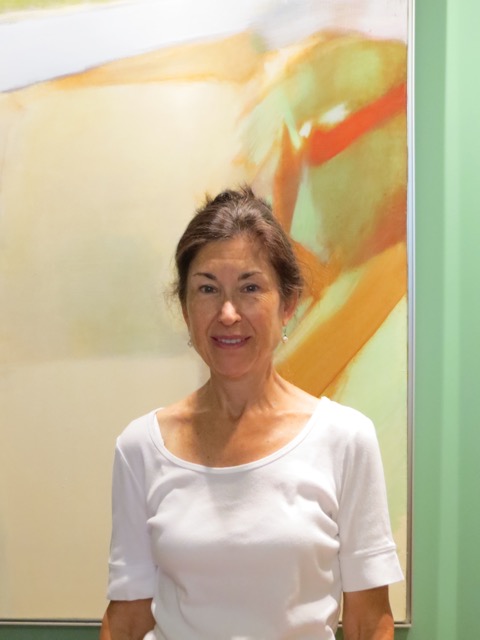Dayton Duncan has worked with Ken Burns for more than 30 years writing and producing some of the most important and critically acclaimed documentaries in history. In this podcast he talks about his career with Burns and Florentine Films, living part-time in Georgia, and what comes next.
Category Archives: People
Visiting Scholars: Dr. Alisa Luxenberg
With the reopening of the Georgia Historical Society’s newly expanded and renovated Research Center, GHS is again getting visits from scholars, students, and researchers from all over the world researching and studying a wide variety of topics. Off the Deaton Path would like to introduce our readers to some of these visiting scholars and share with you what they’re working on and what they’re finding at GHS.
This week we’ll spotlight Dr. Alisa Luxenberg, Professor of 18th- and 19th-Century European Art at the University of Georgia’s Lamar Dodd School of Art. She is the author of two books: The Galerie Espagnole and the Museo Nacional, 1835-1853: Saving Spanish Art, or The Politics of Patrimony (Ashgate, 2008); and Secrets and Glory: baron Taylor and his ‘Voyage pittoresque en Espagne’ (Centro de Estudios Europea Hispánica, 2013). She is the co-editor, with Reva Wolf, of Freemasonry and the Visual Arts from the Eighteenth Century Forward (Bloomsbury, 2020).
Tell Us About Yourself: I was born and raised in Shaker Heights, Ohio, a suburb of Cleveland. My public high school was superb and allowed us to apply to an off-campus AP course in art history taught at the Cleveland Museum of Art. Each week for the entire year, we visited its world-class collections to examine works of art from the culture and period we were studying—I was captivated. When I matriculated at Duke University, I wrongly thought I wanted to be a veterinarian, and eventually gave in to my love of art history and double majored in French literature. I went on to do a Master’s in Art History at Boston University, took a year off to work for an art dealer in New York, and then continued in the PhD at the Institute of Fine Arts, New York University. The variety of voices in those art history departments, the superb museums in New England, and the real-world experiences with auction houses were essential to my formation as an object- and archive-based scholar open to the multiplicity of scholarly interpretation.
I have been teaching at the University of Georgia since 1999 and will be stepping down at the end of this academic year. I was fortunate to have taught elsewhere: Princeton, the American University in Paris, Washington University in St. Louis, Ohio State, Case Western Reserve, the University of Kentucky. I learned so much about teaching from having created so many different courses and interacting with diverse student bodies. A good thing, too, since I had no training in pedagogy! At UGA I mainly teach a rotation of eight courses in 18th- and 19th-century art, with some special topics sprinkled in. My research has focused on French and Spanish artistic interactions and early French and American photography.
Art history has always fascinated me for the rich fabric that one can weave around the work of art, which performs at the intersection of language, materiality, aesthetics, and often too, of politics, religion, gender, and class. I love the adventure of embarking on a research project, not knowing what I will find, forming questions no one has thought to ask, and the sheer thrill of opening manuscripts and books that no one has touched for generations or even centuries.
I’m convinced that I chose European art because of my own family history. Europe seemed very close to me; both of my grandfathers were immigrants who, along with one grandmother, spoke with strong foreign accents. The calamities that they and their families suffered during the Holocaust and behind the Iron Curtain weighed heavily on them and gave us sobering glimpses of their European past.
Tell Us About Your Current Project: This project represents a real break with the bulk of my career as it examines material culture in the U.S. However, it also enlarges upon my last major publication, a co-edited volume on the relationships between freemasonry and the visual arts (with Reva Wolf, Freemasonry and the Visual Arts from the Eighteenth Century Forward,Bloomsbury, 2020). I dove into freemasonry through the baron Taylor, a major figure in French 19th-century culture, high-ranking Mason, and the protagonist of my first two monographs.
After finding intriguing masonic objects in the Special Collections Libraries at UGA, I realized that I could parlay my knowledge in freemasonry into new research that fulfilled the land-grant mission of UGA and related more directly to Georgians. To that end, I am curating an exhibition of masonic materials (mostly) from Georgia that will open in January 2023 and writing a scholarly catalogue to accompany it.
Through these items we can perceive the pervasiveness and impact of freemasonry on life and culture in Georgia, from the State seal to the emblem of UGA, from college fraternities to other masonic and para-masonic groups like the Order of the Eastern Star, Knights of Pythias, and Gridiron Club. Although largely segregated, freemasonry provided Blacks in Georgia a safe place through which to help their fellow men and communities endure Jim Crow laws and advocate for their civil rights. Freemasonry left its traces everywhere in Georgia, once we are prepared to recognize the signs. Most of us have probably had a Mason or two in our families at some point. I know I was surprised to learn of some in my family! They were Jewish, Catholic, or immigrants, and serve as instances of the religious and class tolerance professed by masonic bodies. In these and other ways, freemasonry offers us an example of how, during quarrelsome times, people overcame their differences and met as equals, “on the level,” to try to improve themselves and reduce suffering in the world.
What Are you Finding at GHS? In general, it is difficult to do research into freemasonry for numerous reasons, but primarily because it is a secret society and, in the U.S., limited to men, and many lodges closed, or their records were lost over time. Some states have Grand Lodges that offer a masonic research collection; Georgia does not. At the beginning of my project, I thought the GHS would be my main research source, but it closed for renovation before I had my grant in hand, so I have been waiting more than three years to come! It forced me to find other resources, which allowed me to fine tune my research at the GHS.
The most significant collections for my project are those related to the eminent Savannah lodge, Solomon’s Lodge No. 1 (GHS 940), one of the first three recognized masonic lodges in the British North American colonies. These records have been microfilmed and contain 18th- and 19th-century minute books –a rarity, as so few have survived, due to fire, war, or neglect—that provide an idea of the membership, practices, and concerns of the lodge, as well as the masonic lives of specific members. For example, we hope to include a portrait painting of the Savannah Mason, John Habersham (Georgia Museum of Art), in the exhibition. Little research has been done on the painting or on Habersham’s masonic life. Now I will be able to provide documentary evidence of his freemasonry and possible readings of the portrait in relation to it.
Visiting Scholars: Molly Nebiolo
With the reopening of the Georgia Historical Society’s newly expanded and renovated Research Center, GHS is again getting visits from scholars, students, and researchers from all over the world researching and studying a wide variety of topics. Off the Deaton Path would like to introduce our readers to some of these visiting scholars and share with you what they’re working on and what they’re finding at GHS.
This week we’ll spotlight Molly Nebiolo, a PhD candidate at Northeastern University in Boston, and a 2021-2022 Friends of the APS Predoctoral Fellow in Early American History at the American Philosophical Society in Philadelphia.
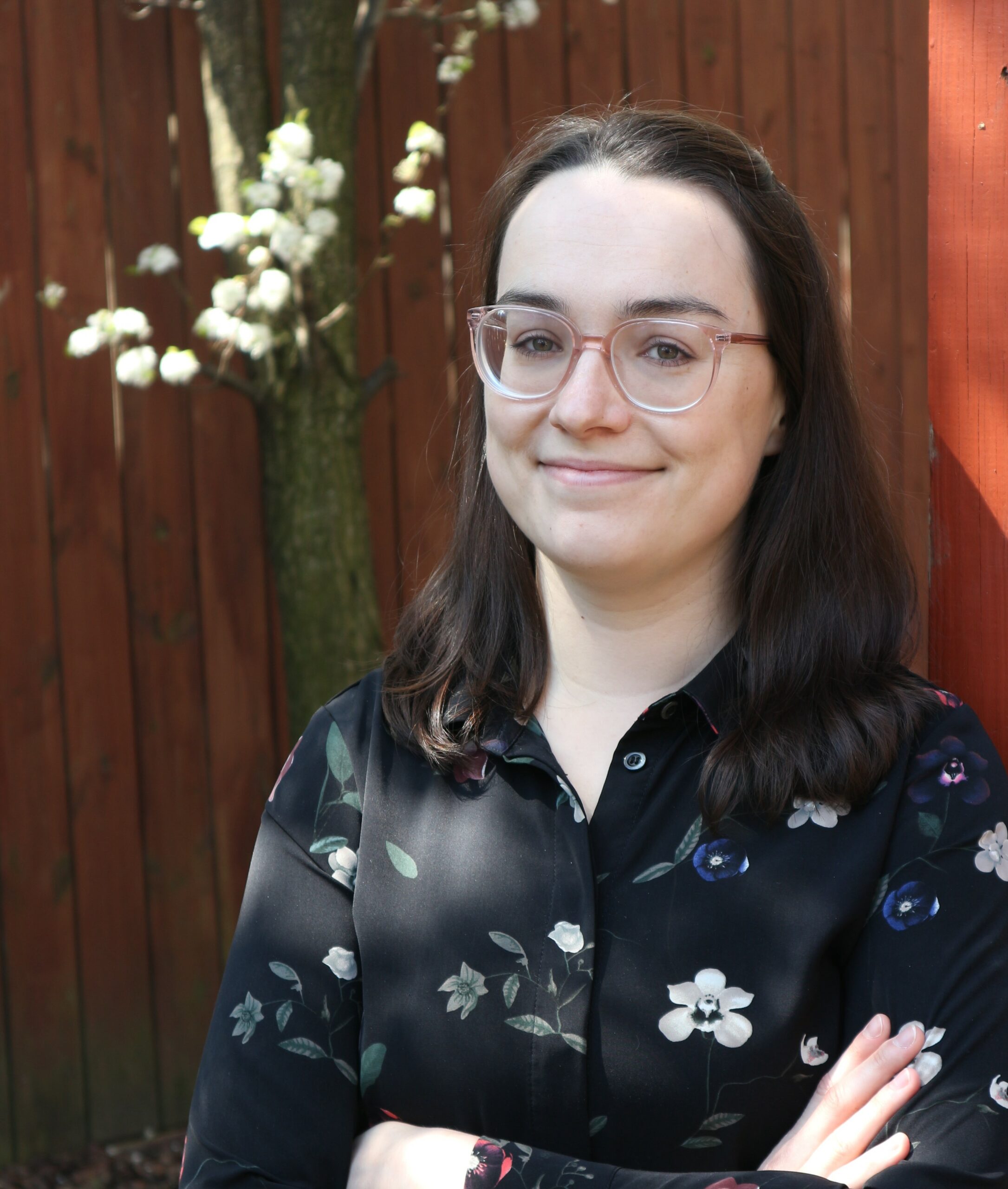
Tell Us About Yourself: I grew up on Long Island Sound in the town of Milford, Connecticut, but I attended college in the Midwest at Butler University. I was always drawn to history as a subject, even though I was exhausted by the colonial New England and Pilgrim history that was found all over Connecticut. At Butler, I double majored in History and Biology and wrote a senior honors thesis attempting to disseminate why socio-cultural feelings towards English surgeons evolved in the early modern period. After college, I moved to Cambridge, Massachusetts, to be a researcher at MIT and an IT technician at a nearby school before starting my PhD program at Northeastern University. I am a 5th year, so the end is in sight!
Tell Us About Your Current Project: I have continued my interest in the history of medicine in the early modern period, now studying the era I grew up disliking: early American history. Opinions really can change with age! My dissertation looks at the ways in which health influenced the planning, settlement, and growth of early American cities that followed the “Grand Modell” scheme of construction: Savannah, Charleston, and Philadelphia. I argue that public health was a central agenda to settlement and city infrastructure in the seventeenth and eighteenth centuries. With my background in computers, I also dabble in the digital humanities and have used digital tools for various projects, the most relevant being an ongoing project to 3D model parts of colonial Philadelphia to better understand early American urban space. All of this is for my dissertation and, hopefully, a book.
As many people can attest when getting their PhD, I stumbled upon my research topic. I was initially interested in women and medicine in the early American period, but when I began research, I noticed how no one had written much on the role of health in early urban spaces, even though “cities” dotted the Atlantic coast. I also noticed that when health has been written about by scholars, it was often the history of the big epidemic outbreaks or political influences on health, not a deeper analysis of early American conceptualizations of healthiness and disease. My project tries to provide a more comprehensive history of urban public health that exemplifies the diverse ideas of healthiness that existed in these cities.
What Are you Finding at GHS? The GHS has been integral to my research on colonial Savannah. I’ve examined a wide range of items to best understand how Proprietors and Trustees planned and settled the town, and how inhabitants thought about their health and the healthiness of the city. This includes the letters of Oglethorpe and other colonial inhabitants in Savannah in the eighteenth century. I also looked at some of the early nineteenth-century texts written by doctors to explain the 1820 yellow fever outbreak to see how terms and ideas remained or changed over time. Maps of early Savannah have been useful (and there are more I will check out on the Digital Images catalogue!). On my last day, I looked through some of the colonial laws and records of early Savannah that are housed in London but are in microfilm at the GHS.
One collection that stood out to me was the Walter Charlton Hartridge, Jr. Collection (MS 1349). The breadth of information that Hartridge collected and wrote about regarding Savannah’s history has been surprisingly useful to me. While his papers are from the twentieth century, his notes on the mortality records found in the Georgia Gazette, from 1763 to 1802, and documents on early Savannah architecture were a surprisingly useful find!
Visiting Scholars: Dr. Robert Stephens
With the reopening of the Georgia Historical Society’s newly expanded and renovated Research Center, GHS is again getting visits from scholars, students, and researchers from all over the world researching and studying a wide variety of topics. Off the Deaton Path would like to introduce our readers to some of these visiting scholars and share with you what they’re working on and what they’re finding at GHS.
This week we’ll spotlight Dr. Robert Stephens, a Professor of World Music at the University of Connecticut.
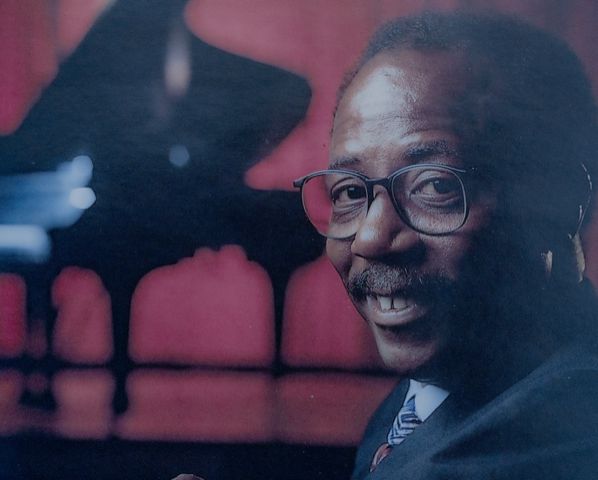
Tell Us About Yourself: I was born in Savannah and spent my formative years there, graduating from A. E. Beach High School and Savannah State, where I received my B.S. degree. After graduation, I spent several years teaching public schools in Florida and Georgia, intersected by a tour in Vietnam. Who could have known that Army service would alter the trajectory of my career path? I certainly did not, because my service allowed me to pursue an M.A. in music education and M. Ed. in Educational Administration from Columbia University and a Ph.D. from Indiana University in Music and Ethnomusicology.
My teaching career ranges from public school marching bands, the introductory course in World Music, guided student research experiences on the Hopi reservation in Northern Arizona, Havana, Matanzas, and Santiago de, Cuba. I have taught various graduate courses and courses exploring African-American History and Culture. My teaching at Montclair State University and the University of Connecticut helped forge my research interest in the sacred drumming of Santeria, spending some ten years studying and writing about the tradition in Cuba and the United States.
My current interest includes collaborating with the Balinese scholar Dr. I. Made Bandem on a work focused on the Balinese Gamelan. My most recent research on sound, movement, and word, looks to tie Gullah expressive culture to divine contact, social commentary, and psychological battles won during enslavement, not with force but with the most potent tools available, resilience and creativity. This work grows from five competitive awards from the National Endowment for the Humanities’ Landmarks in American History funding “Gullah Voices: Traditions and Transformations,” a workshop for elementary-secondary school teachers I led with my colleague Dr. Mary Ellen Junda.
Tell Us About Your Current Project: My work explores new ground using creative expression. My role is to examine the history, stories, beliefs, and creative practice of the Gullah, critical antecedents to a subsequent African-American culture, and its role in the broader American mosaic.
A barbershop on West 45th street operated by Mr. Ulysses Davis sparked my interest in a culture widely known in the area but rarely discussed in depth. Other young men in our community and I received the “scriptures from a Savannah Barbershop.” He was the storyteller/ artist, and we, the listener/learners. This was not an ordinary barbershop. But getting a haircut was one piece of the pie. Other tasty slices include the stories he told of Africa, its kingdoms, rulers, and beauty supplemented by his hand-carved sculptures. It was a remarkable contrast to the Africa portrayed in Tarzan movies. My friends and I always looked for the same thing in his stories, to learn new things and bask in the pride of an Africa we could barely imagine. Mr. Davis knew that. And he was always ready to reveal his carefully gathered evidence for doubters at a moment’s notice. Mr. Davis lit my Gullah/Geechee fire, and for that, I will forever be grateful.
Research at the Georgia Historical Society has helped me probe connections between context and function in African and Gullah creativity. To put it another way, as my investigation unfolds, I am beginning to see how external factors fueled seen and unseen changes in Gullah life. For instance, how expressive space built around sorrow, joy, hope, and fear fades the line between the real and imagined; how sound, image, gesture, movement, and material objects communicate their interrelatedness and give voice to the emotions of the lived experience. There is little doubt that the relationship between sound structure and social structure is key to understanding Gullah’s expression, a point that has not received wide scholarly attention.
Cultural survival relies on compliance with the authority of customs, ways of life, and tradition. A heavy responsibility hangs over those who use sound to translate customs and life depicting feeling into expression. Because “words under words,” as the poet Naomi Shihab Nye describes them, carry meaning resting in meaning and can instigate or change decisions. Material culture—where people create objects and images and attach importance—like words, unravel the complex lives of those who make them. No matter the tool, the creative voice of the Gullah community is as encompassing and as powerful.
Cornelia Bailey, the matriarch of Sapelo Island, was fond of saying, “if you don’t know where you come from, you don’t know where you’re going.” That “come from” history informs my interest. Knowing “where you’re going” not only prevents getting lost on the way, but it also explains religion, art, music, and movement, prescriptions for living. At the same time, the imagination creates alternative geographies in mind-broadening perspective and informing practice. These collected factors are the foundation for the book that will emerge from this research. The uniqueness of this approach, in my view, not only explains how different we are but also how much we are alike while simultaneously encouraging a fuller understanding of the American experience.
What Are you Finding at GHS? Tell us here what collections you’re looking at, what you’re finding in them, and how it relates to your project. The Lydia Austin Parrish Letters, 1947-1952 (MS 607) have been informative and allow today’s readers to visit another place differently. They paint a picture of a woman of means fascinated by old songs of the enslaved. The letters reveal many Parrish relationships whose backstories wander into the conversation, often with their sentimental views. Particularly fascinating is the structure of these conversations and what they tell about the writers and their social interactions. But Parrish is best known for her work with “The Spiritual Singers Society of Coastal Georgia” in the 1920s, later known as the Georgia Sea Island Singers. Parrish’s actions enabled the singers and others to transmit ordered bits and pieces of memory to those who follow both inside and outside the Gullah community. Generational inheritance.
Her research efforts began when she heard her housekeeper, Julia Armstrong, singing one of the old songs. That experience prompted Parrish to visit former plantations searching for other people who knew similar old songs. These efforts led to the formation of the group. The letters offer a fascinating insight into Parrish, what motivated her, and how she used the group in her social settings.
Another essential collection is the archives of Muriel Barrow Bell and Malcolm Bell Jr. (MS 1283). The Bells are best known for their work with the Works Progress Administration in 1939, documenting African Americans in coastal Georgia through photographs. These files provide essential detail on the people interviewed for the writer’s project. Malcolm Bell published important work on “Major Butler’s legacy,” where his interest is not academic categories but stories of people.
Also, the Dancy and Woods Family Papers, 1836-1940 (MS 1305), and the Keith M. Read Collection, 1770-1907 (MS 648), both provide insight into life in the compounds. William Brown Hodgson’s Notes on Northern Africa (1844) for language, and the Richard Leake Plantation Journal and Business Records, 1785-1802 (MS 485), have all been beneficial.
One Night Only, 40 Years Later
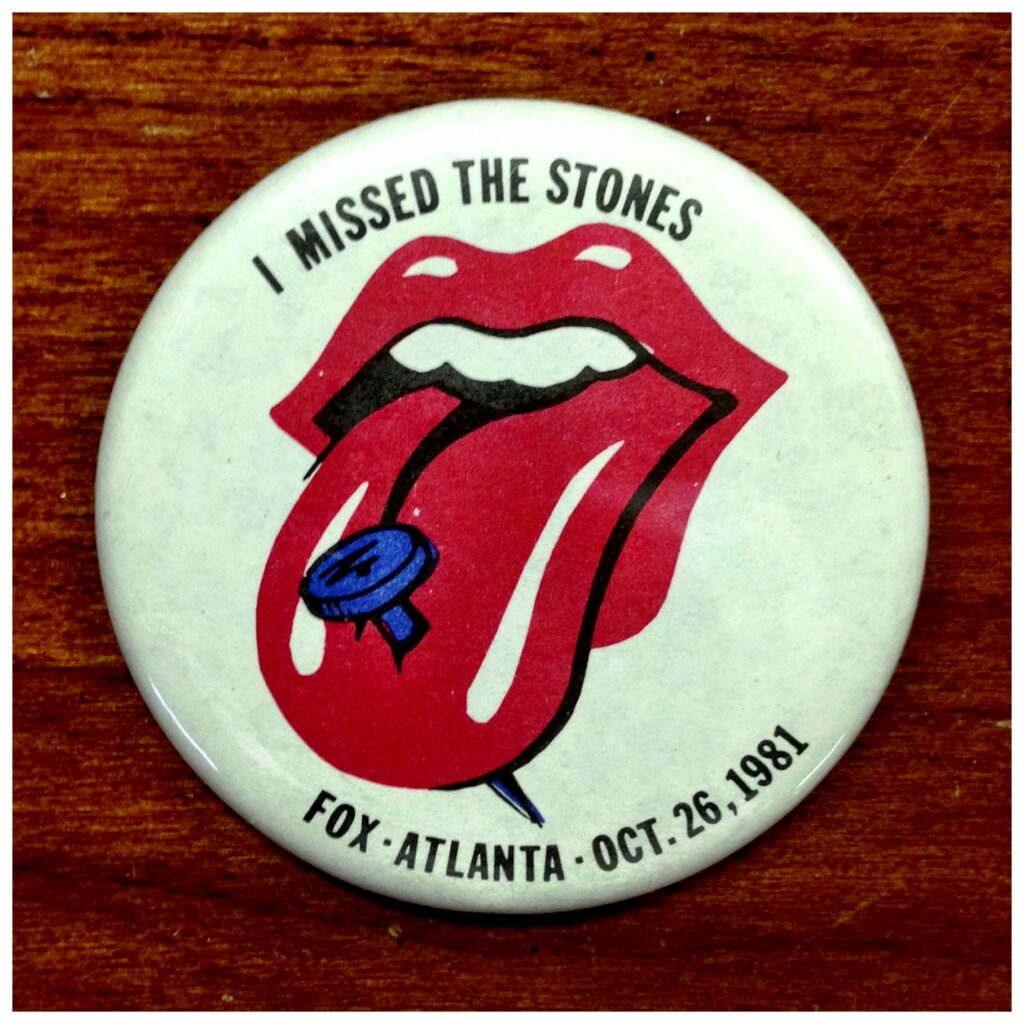
Forty years ago, on October 26, 1981, the Rolling Stones brought their North American tour to the Fox Theater in Atlanta. Tickets went on sale—less than 5,000 of them—about two weeks earlier, at 2:30 in the morning, only at the Fox box office. Most were snatched up by sleepy Georgia Tech students. When Atlantans woke up the next day, they heard that the Stones were coming, the show was already sold out, and you had a better chance of seeing Bigfoot than scoring tickets to the show. While almost all the other shows on the tour were in stadiums or large arenas, the Stones chose the intimate Fox for the Atlanta show.
Thanks to my brother Jeff—who stayed up all weekend before winning tickets by being the 93rd caller to an Atlanta radio station on that Monday morning—I turned out to be one of the relatively few people who saw that legendary show. As long-suffering readers of this blog know, it was one of the foundational nights of my life. My first Stones concert, and coincidentally also the first for Stones keyboardist Chuck Leavell, who has become a key component of their ongoing success.
40 years later, on Veterans Day, 2021, Jeff and I decided to re-live the magic by closing the circle and seeing the Stones together again, this time at a slightly larger arena—Mercedes-Benz Stadium in Atlanta. This was my 11th Stones show, the 5th in Atlanta.
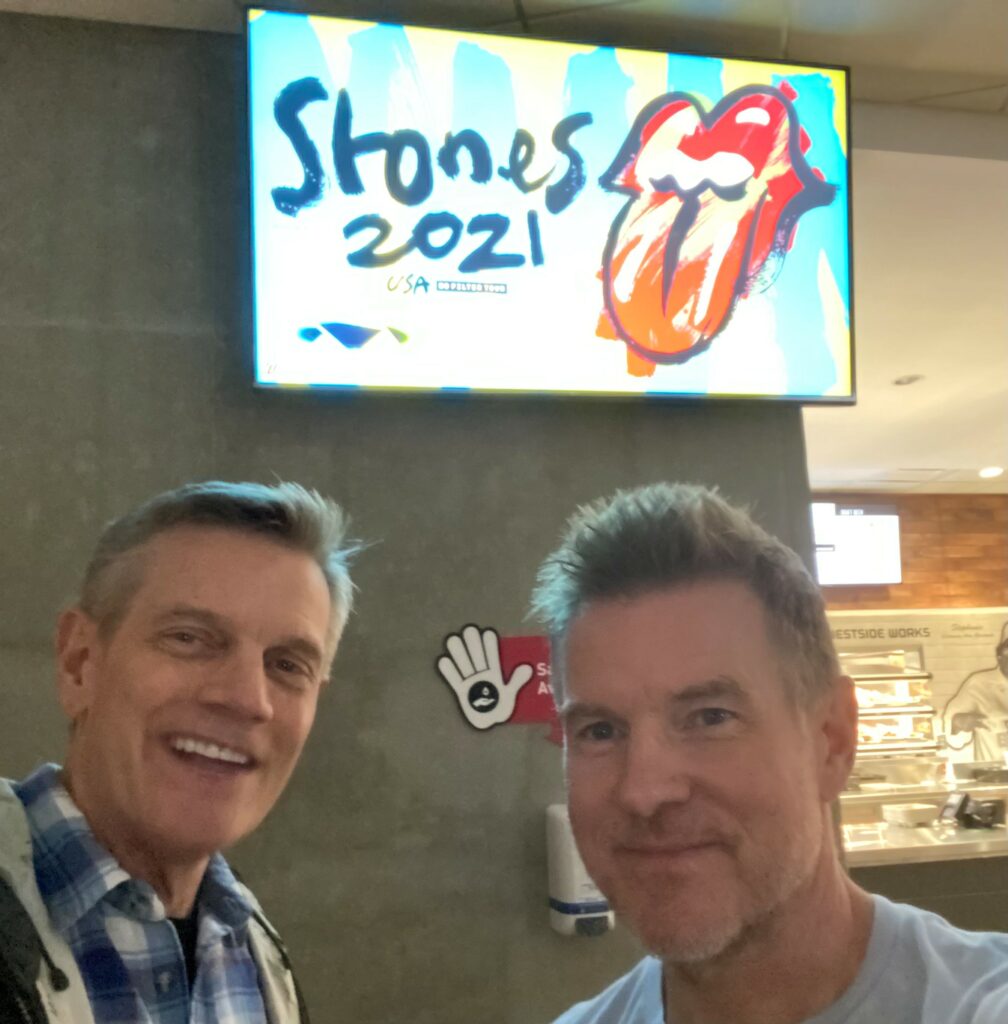
This was the first show I would hear without beloved Stones drummer Charlie Watts. He’d been with the band since January 1963, and until their first show on the current tour the Stones had never played a gig without him in 59 years. How do you replace the irreplaceable? Not to mention—but I’ll mention it anyway—Mick Jagger is now 78, Keith Richards is 77, Ronnie Wood is 74. Isn’t this supposed to be a young person’s game? The Wembley Whammer was fittingly remembered just before the show with a video tribute on the gigantic screens that tower over the stage.
Not to keep you in suspense, but the Stones—and I would call them “the surviving Stones,” but with these guys that’s been true since the death of Brian Jones 52+ years ago—were as good as it gets. Better than ever. Maybe even better than that. How is that possible? From the opening and unmistakable chords of “Street Fighting Man” through the buzz-bomb bass notes of “19th Nervous Breakdown,” through “Shattered,” (shadoobie) and “Satisfaction” the Stones did what they do and that no one else can.
After nearly 60 years, they still set the gold standard. Mick ran and pranced and “wiggled his bum,” as Charlie used to say. Keith wore a beanie throughout like the Grand Old Ghoul of Rock n’ Roll that he is, playing louder than ever, smiling and loving every minute. Ronnie was Ronnie. They even threw in 1967’s “She’s a Rainbow” (from Their Satanic Majesties Request), allowing Chuck Leavell to showcase his keyboard chops. Steve Jordan on the drums brought an energy and vibe that honored Charlie Watts while putting his own unique stamp on the music. They are still playing with an energy and a love for performing that defies reason. Like every other Stones concert I’ve witnessed across four decades, I didn’t want the music to end.
Seeing the Stones 40 years ago was already, at that time, seeing history. The Beatles had been broken up for a decade and John Lennon was dead. Led Zeppelin had dissolved two years earlier. Elvis had been gone for 4 years. Other founding acts of early rock had already long since vanished or gone into hibernation.
The Stones rolled on, aging but never growing older, continuing to play, dismissing the critics, and with every passing decade they passed milestones that seemed impossible. Touring at 50 in the 1990s? Ridiculous. Having another go at 60 in the early 2000s? They’ll embarrass themselves. Are they really going out on the road at 70, in the 2010s?? What will they call it, the Walker Tour? The Roller Derby?
Now they’re approaching 80, and are at a place no band has ever reached. No one now even remembers the British invasion, but watching the Stones is to remember the shock of their early appearance with long hair, their surly attitudes and rebellious sneers, and their anti-establishment pose. They still have something to prove, and they clearly enjoy trying to prove it.
It’s bound to end sometime, isn’t it? Surely Jeff and I won’t be seeing them again in 40 years—or even 5. But as we walked out of the arena, there on the big video screen was a message from the Stones that—true to form for them—teased and tantalized, but that I fervently hope was true:
“See you soon.”

